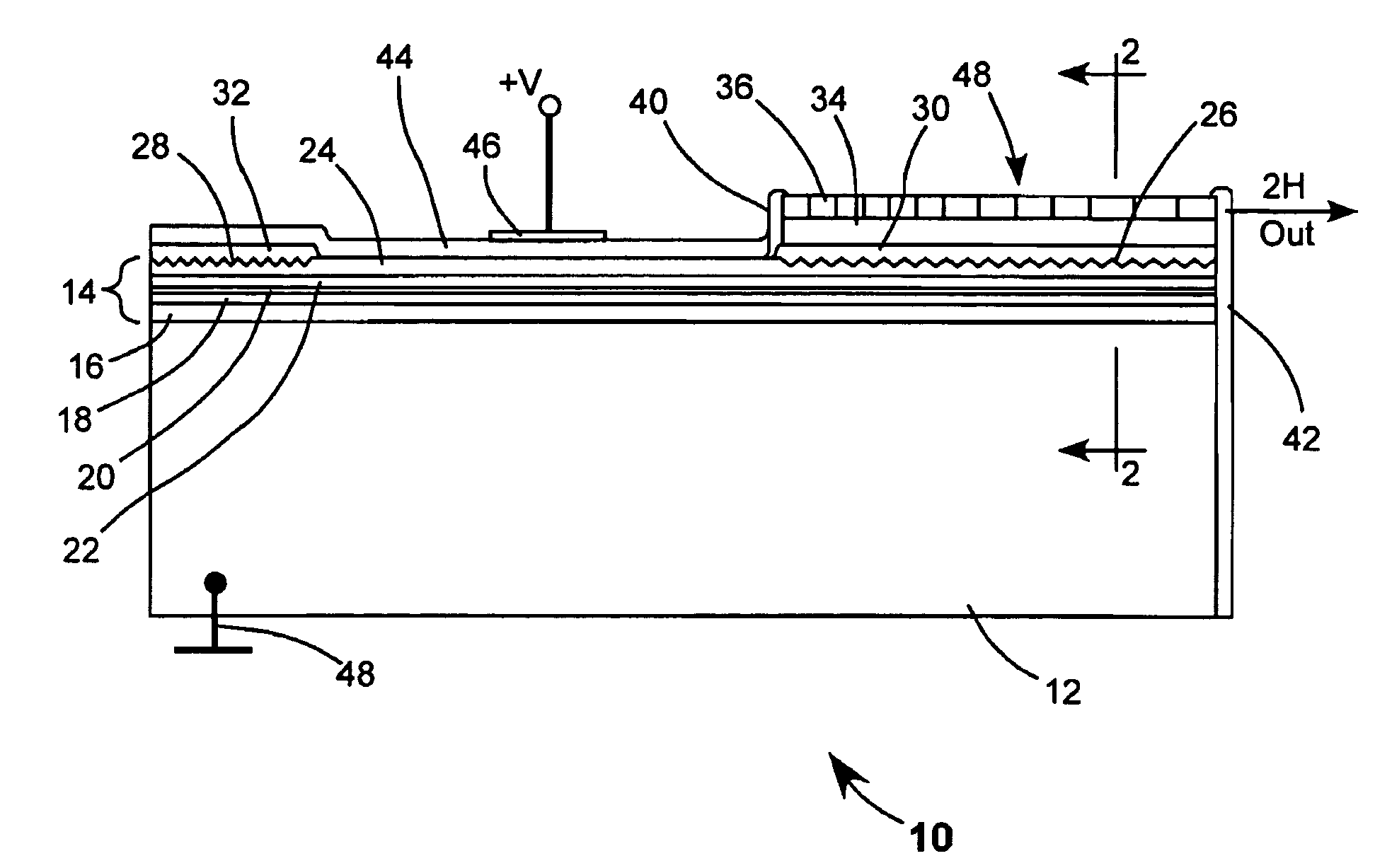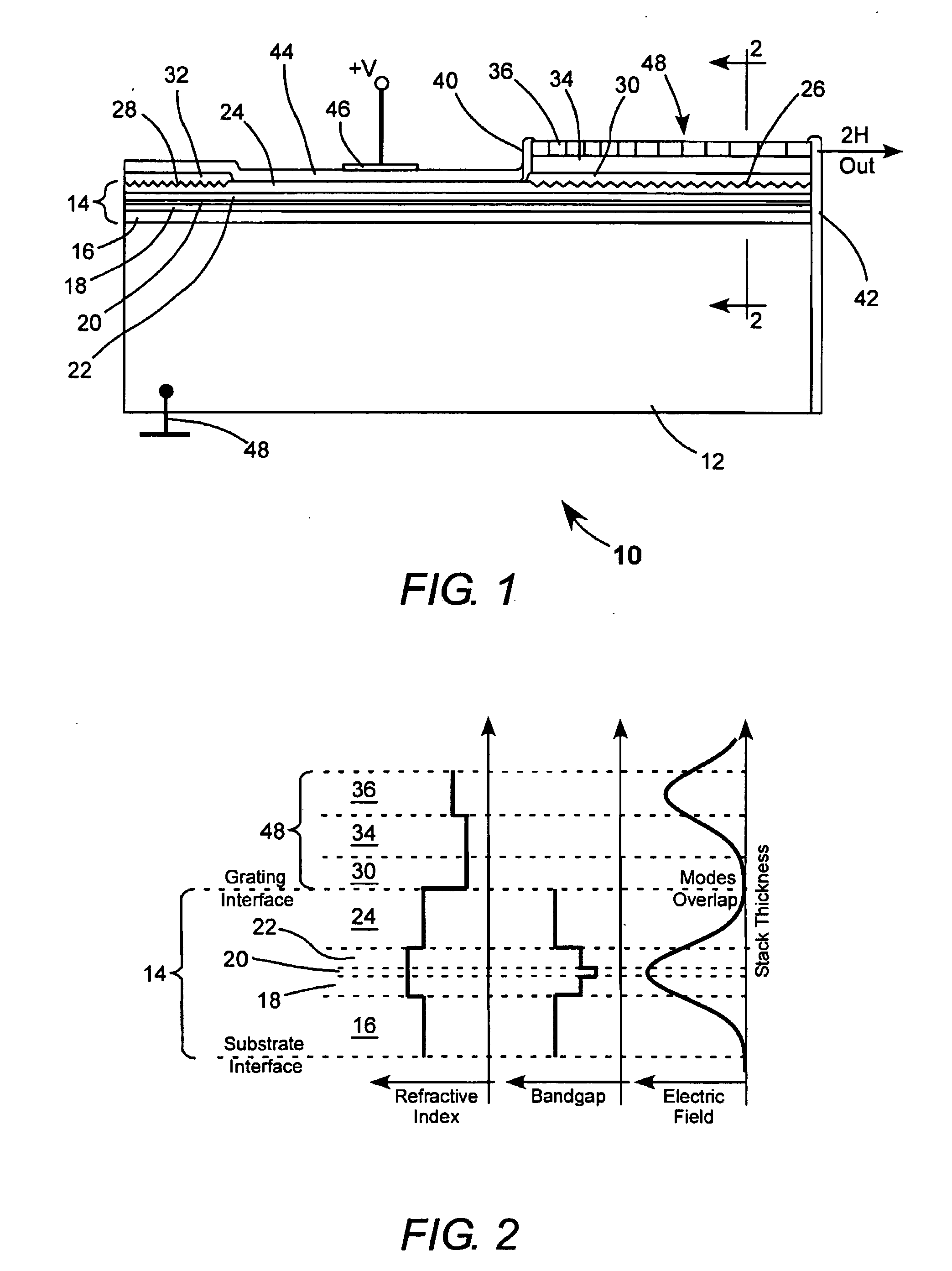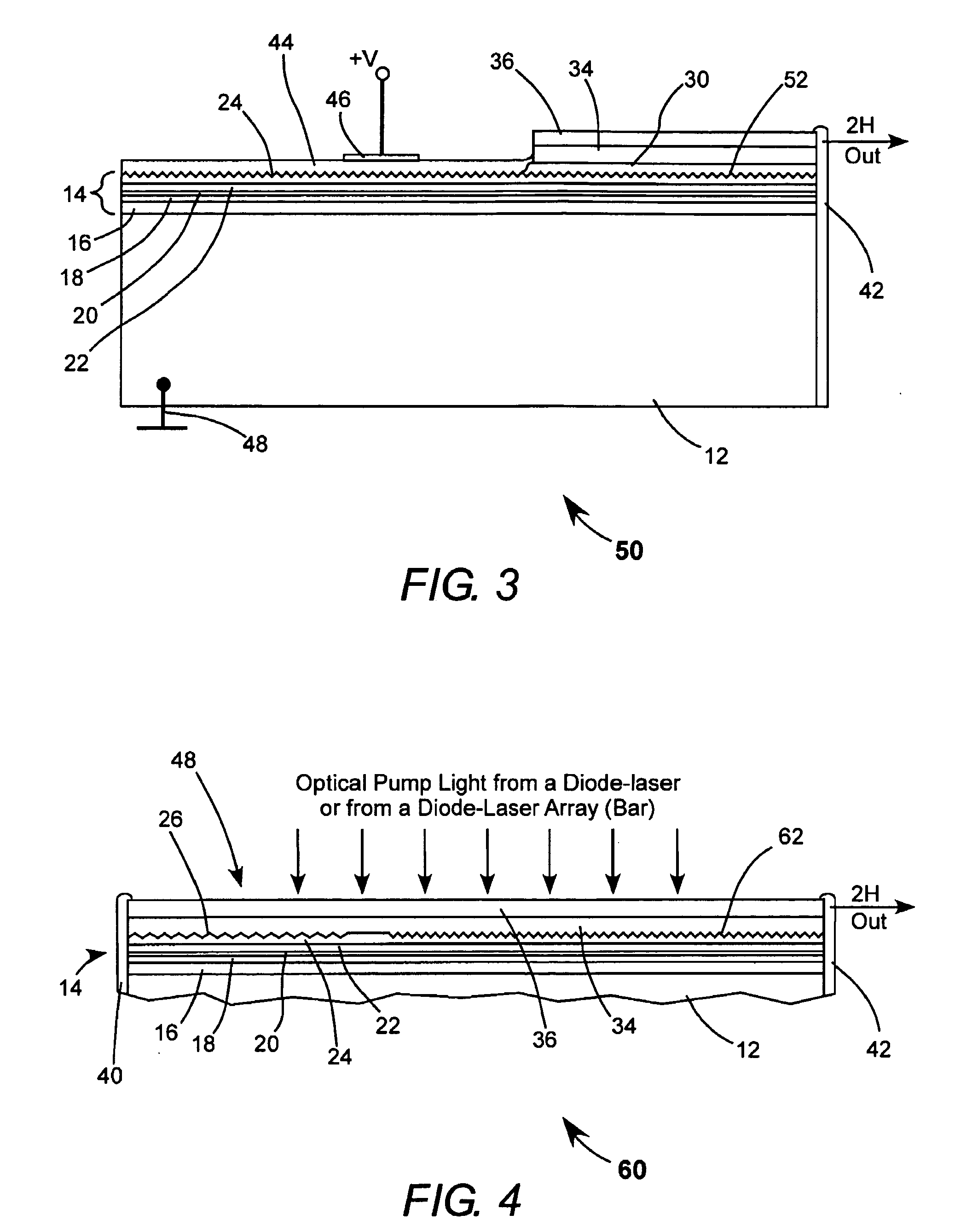Frequency-doubled edge-emitting semiconductor lasers
a semiconductor laser and frequency-doubling technology, applied in semiconductor lasers, laser details, electrical equipment, etc., can solve the problems of complex free-space optics, inability to achieve a focused free-space beam with a high intensity, and no commercially available diode lasers, etc., to facilitate coupling of fundamental radiation
- Summary
- Abstract
- Description
- Claims
- Application Information
AI Technical Summary
Problems solved by technology
Method used
Image
Examples
Embodiment Construction
[0020]Referring now to the drawings, wherein like components are designated by like reference numerals, FIG. 1 is an un-shaded longitudinal cross-section view schematically illustrating one preferred embodiment 10 of a frequency-doubled diode-laser in accordance with the present invention. FIG. 2 schematically graphically represents a refractive index profile, bandgap profile, and an electric-field intensity profile in frequency doubled diode-laser 10 seen generally in the direction 2-2 of FIG. 1.
[0021]Laser 10 includes a single crystal substrate 12 on which is an epitaxially grown, separate-confinement semiconductor heterostructure 14. In this example, heterostructure 14 includes a lower cladding layer 16, a lower waveguide layer 18, a quantum-well layer 20, an upper waveguide layer 22, and an upper cladding layer 24. Layers of heterostructure 14 are preferably layers of various formulations of III-V materials. The relative refractive index and bandgap of the layers, whatever the m...
PUM
 Login to View More
Login to View More Abstract
Description
Claims
Application Information
 Login to View More
Login to View More - R&D
- Intellectual Property
- Life Sciences
- Materials
- Tech Scout
- Unparalleled Data Quality
- Higher Quality Content
- 60% Fewer Hallucinations
Browse by: Latest US Patents, China's latest patents, Technical Efficacy Thesaurus, Application Domain, Technology Topic, Popular Technical Reports.
© 2025 PatSnap. All rights reserved.Legal|Privacy policy|Modern Slavery Act Transparency Statement|Sitemap|About US| Contact US: help@patsnap.com



